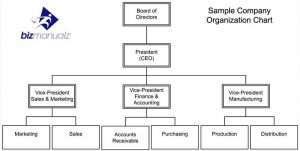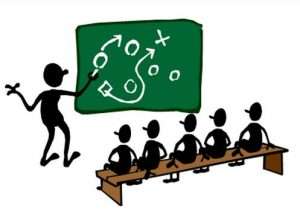What’s the Difference Between the Roles of President and CEO?

When we think of leadership in a corporate setting, two titles typically come to mind: President and CEO. Both roles are essential to the success of any company, but what exactly is the difference between them? In this article, we will explore the unique responsibilities of each role, examine the key differences and similarities between them, and discuss the factors that influence whether they are separated or combined. What’s the difference between the roles of President and CEO?
Understanding the Roles of President and CEO
When it comes to the leadership of a company, there are two main positions that are often confused with each other: the President and the CEO (Chief Executive Officer). While these two roles share some similarities, they also have distinct differences that set them apart. But, before we dive deeper into the differences between these two roles, let’s first define what each of them entails.
The Role of a President
A President Job Description states that it’s typically responsible for the day-to-day operations of a company. They oversee the various departments and ensure that everything is running smoothly. This includes managing employees, setting goals and objectives, and monitoring progress.
They are also responsible for implementing the strategic vision of the company and executing plans to achieve it. This can include developing new products or services, expanding into new markets, or improving existing processes.
Additionally, a President may also be responsible for managing relationships with key stakeholders, such as customers, suppliers, and partners. They may also be involved in making key business decisions, such as mergers and acquisitions, and may even serve as the public face of the company.
The Role of a CEO
The CEO Job Description, on the other hand, explains a broader scope of responsibilities. They are the ultimate decision-maker in the company and are responsible for setting its overall direction. This includes developing the company’s mission and values, creating a long-term strategic plan, and ensuring that the company is meeting its financial goals.
CEOs must be adept at long-term planning and have a deep understanding of the industry and its trends. They also have more external-facing responsibilities than a President, such as managing relationships with investors and the media. This includes communicating the company’s vision and strategy to stakeholders, as well as representing the company in public forums.
CEOs also play a critical role in shaping the company’s culture and values. They are responsible for creating a positive work environment and ensuring that employees are aligned with the company’s mission and goals. This includes developing and implementing policies and procedures that promote employee engagement, diversity, and inclusion.
Finally, a CEO must be able to make tough decisions when necessary. This can include making difficult financial decisions, such as cutting costs or laying off employees, as well as navigating complex legal and regulatory issues.
Overall, while the roles of President and CEO may overlap in some areas, they are distinct positions that require different skills and responsibilities. By understanding the differences between these two roles, companies can ensure that they have the right leadership in place to drive success and achieve their goals.
Key Differences Between President and CEO
Now that we have a better understanding of the roles, let’s examine the key differences between them.
Decision-Making Authority
The most significant difference between a President and a CEO is the level of decision-making authority they have. While a President may have some decision-making power, the CEO has the final say on all significant decisions. This includes things like major acquisitions and changes in company direction.
For example, if a company is considering a merger with another firm, the President may present a proposal to the CEO. The CEO will then review the proposal and make the final decision on whether or not to proceed with the merger. This decision will have a significant impact on the company’s future, and the CEO is ultimately responsible for making it.
Reporting Structure
Another significant difference is the reporting structure for each role. The President typically reports to the CEO, while the CEO reports to the Board of Directors. In other words, the CEO has a more direct line of communication with the company’s top decision-makers.
This reporting structure is designed to ensure that the CEO has the support and guidance they need to make informed decisions. The Board of Directors is responsible for overseeing the company’s overall strategy and ensuring that it is aligned with the company’s mission and values. The CEO must work closely with the Board to ensure that their decisions are in line with these goals.
Strategic Planning and Execution
Both the President and CEO are responsible for strategic planning, but the CEO has a broader scope of responsibility. They must analyze industry trends and new technologies while keeping a finger on the pulse of the company’s financial health. They must then use this information to develop a long-term vision for the company and execute plans to achieve it.
For example, if a company is in the technology industry, the CEO must be aware of emerging technologies that could disrupt the market. They must then develop a plan to either adopt these technologies or compete with them. This requires a deep understanding of the industry and the company’s strengths and weaknesses.
In addition to strategic planning, the CEO is also responsible for executing these plans. This involves working closely with other executives and managers to ensure that everyone is aligned with the company’s vision and goals. The CEO must also be able to adapt to changing market conditions and adjust the company’s strategy as needed.
Similarities Between President and CEO Roles
While there are significant differences between these two roles, there are also many similarities. Let’s explore some of the key similarities in more detail.
Leadership Responsibilities
Both the President and CEO are responsible for providing leadership to their teams. They must set the tone for the company’s culture and ensure that everyone is working together towards a common goal. This means that they must be able to inspire and motivate their teams to do their best work.
Effective communication is also critical in both roles, as they must be able to convey their vision and goals clearly to their teams. This involves not only speaking and writing clearly, but also actively listening to feedback and ideas from team members. Ultimately, the success of the company depends on the ability of the President and CEO to lead their teams effectively.
Financial Management
Both the President and CEO have a responsibility to manage the company’s finances. They must ensure that the company is profitable and that it has the resources it needs to achieve its goals.
This involves making strategic financial decisions, such as whether to invest in new technology or expand into new markets. It also involves managing costs and ensuring that the company is operating efficiently. Financial management is a critical aspect of both roles, as the financial health of the company is essential to its long-term success.
Stakeholder Relations
Finally, both the President and CEO are responsible for managing relationships with stakeholders. This includes investors, customers, and the media.
They must maintain a positive image of the company and ensure that all stakeholders are satisfied with its performance. This involves not only communicating effectively with stakeholders, but also actively seeking out feedback and addressing any concerns or issues that arise.
Building strong relationships with stakeholders is essential to the success of the company, as it helps to build trust and support for the company’s goals and initiatives.
In conclusion, while the roles of President and CEO may differ in some ways, there are many similarities in terms of leadership responsibilities, financial management, and stakeholder relations. These similarities highlight the importance of effective leadership, financial management, and stakeholder engagement in driving the success of a company.
Factors Influencing the Separation or Combination of Roles
When it comes to the roles of President and CEO, companies have to decide whether to separate or combine them. This decision depends on a variety of factors.
Company Size and Structure
The size and structure of a company can play a significant role in deciding whether to separate or combine the roles of President and CEO. In smaller companies, it may not be practical to have separate individuals in these roles.
The President or CEO may need to wear multiple hats and be responsible for a broader range of tasks. On the other hand, in larger companies, the separation of roles may make more sense, as there is more work to be done, and the responsibilities are more complex. In such cases, having separate individuals in these roles can help ensure that each role is given the necessary attention and focus.
For instance, a small startup with a team of ten employees may not have the luxury of having separate individuals in the roles of President and CEO. The CEO may have to take on the responsibilities of the President as well, in addition to other tasks such as fundraising, product development, and marketing. However, as the company grows, it may become necessary to have separate individuals in these roles to ensure that each role is given the necessary attention and focus.
Corporate Governance
The decision to separate or combine the roles of President and CEO may also be influenced by a company’s governance structure. Some companies prefer to have a single decision-maker at the top, while others prefer a more collaborative approach.
In companies where the CEO is also the President, the decision-making power may be concentrated in the hands of a single individual. This can be beneficial in certain situations where quick and decisive action is required. However, in other situations, a more collaborative approach may be necessary, and having separate individuals in these roles can help ensure that decisions are made after careful consideration and discussion.
For example, a company that operates in a highly regulated industry may benefit from having separate individuals in the roles of President and CEO. This can help ensure that decisions are made after careful consideration of legal and regulatory requirements, and that the company is not exposed to unnecessary risks.
Industry Norms
Finally, industry norms can also play a role in the decision to separate or combine the roles of President and CEO. Different industries may have different expectations when it comes to these roles.
For example, in the technology industry, it is more common to separate the roles of President and CEO. This is because technology companies tend to be more complex and require a broader range of skills and expertise. In finance, on the other hand, it is more common to combine these roles, as the focus is more on financial performance and less on product development and innovation.
Overall, the decision to separate or combine the roles of President and CEO depends on a variety of factors, including company size and structure, corporate governance, and industry norms. By carefully considering these factors, companies can make an informed decision that best suits their needs and goals.
The Roles of President and CEO
The roles of President and CEO both play a crucial role in the success of any company. While there are differences between these roles, they also share many similarities.
The decision to separate or combine them should be based on a variety of factors, including company size and structure, corporate governance, and industry norms. Regardless of how a company chooses to structure these roles, both individuals must work together to provide strong leadership, make strategic decisions, and ensure the company’s success.
















Leave a Reply